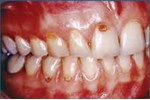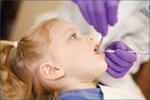
All Clinical


An introduction to air polishing and its benefits
Air polishing is more comfortable and quicker to use than traditional scale and polish cleaning methods, and is suitable for a range of patients. Offering this service could also be an effective way of promoting your practice

Sugar-free gum and dental caries: a high-impact approach
Dental caries remain a major public health problem. However, research has demonstrated that minimal intervention and management approaches can make a dramatic impact in preventing dental caries. Among the most impactful tools in this new approach is sugar-free chewing gum

Airway management in odontogenic infections
Odontogenic infections progress rapidly and patients can deteriorate quickly. Deterioration is due to airway compromise and, if this is not addressed urgently, death from asphyxiation can result. Aggressive airway management reduces morbidity and mortality.

Management of dental fear, anxiety and phobia
Patients are often fearful, anxious or even phobic about visiting the dentist. This can be approached in a number of ways and patients should be assessed to find the most suitable option. If dental anxiety is managed, patient outcomes can be greatly improved

Making prevention work in practice: A course review
This report monitors the development of clinical knowledge and confidence levels in a group of dental nurses enrolled in the ‘Making Prevention Work in Practice’ training scheme

Screening for diabetes in dental settings

Caring for patients with ‘dry mouth’
Dry mouth can lead to ongoing cavities, mouth infections and a number of other physical, social and emotional issues. The dental nurse is in an ideal position to help patients recognise dry mouth symptoms and help sufferers proactively manage their dry mouth condition

Ionising radiation: legislation and risks
Ionisation legislation ensures a safe environment in which to work and receive treatment and requires that those involved in the radiographic process must be appropriately trained for the type of radiographic practice they perform. This article looks at ionising radiation legislation from the dental

Postoperative care after dental implant placement
Patients are often concerned about pain, bleeding and swelling after an implant has been fitted. Verbal and written instructions can help patients to minimise discomfort and problems after surgery and know now to identify an emergency

Restoration of endodontically treated teeth
There have been many recent advances in the methods available for restoring endodontically treated teeth. This article provides a practical guide to the restoration of endodontically treated teeth based on the amount of sound tooth structure remaining

Dental attendance in pre-school children

The dental nurse's role during implant procedures
Dental nurses have a central role in implant placement, from explaining the stages of the process to patients and addressing patient concerns to assisting during the procedure itself and providing postoperative care and advice to maximise success rates

Dental management of patients post head and neck cancer
The aim of this paper is to discuss the dental management of patients who have received treatment for cancer of the head and neck. Following surgical and medical management of head and neck cancers, the postoperative care has an emphasis on maximising and maintaining quality of life

The importance of adequate history taking in dentistry
This article will describe the role of the dental nurse in taking personal, medical and dental histories. It will also emphasise the need for confidentiality and good records of this process, as well as the importance of the patient's first impression of the dental practice, or treatment clinic, bei









